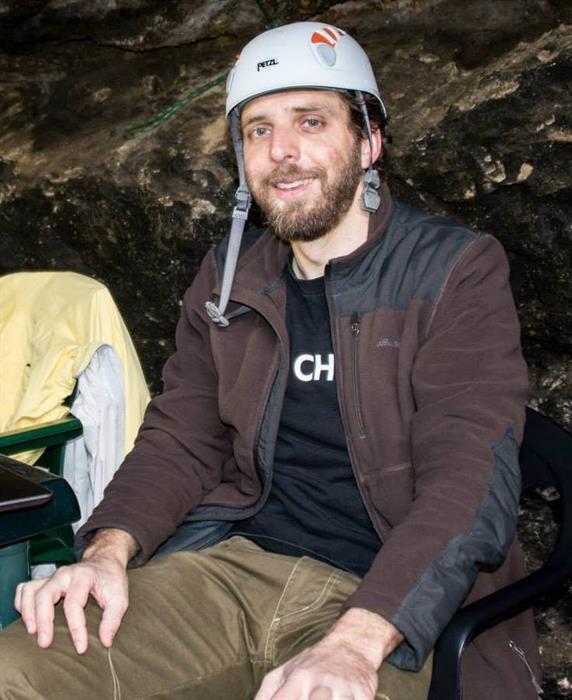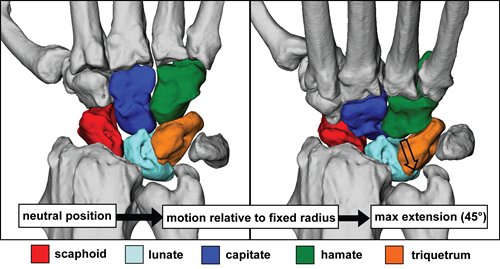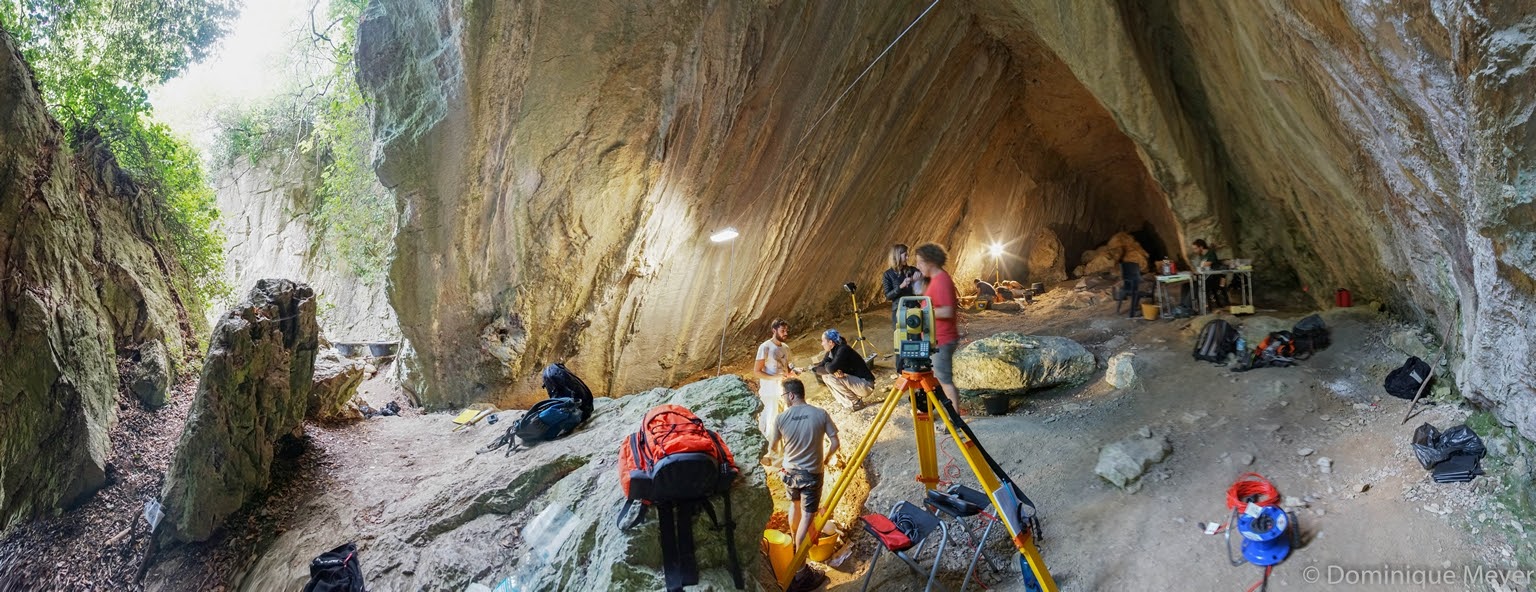Shared Content Block:
Styles for CDB Faculty Pages
Caley Orr, Ph.D.
Associate Professor

| [email protected] | |
| 303-724-0517 | |
| Ph.D., Anthropology, Arizona State University, 2010 |
Dr. Orr is a paleoanthropologist and comparative anatomist who teaches human anatomy in the Masters of Science Modern Human Anatomy program and in the professional health science programs at CU Anschutz. His research focuses primarily on the origins and evolution of key human adaptations including bipedality and tool use. This work involves lab study of primate morphology and the hominin fossil record along with paleontological and archaeological fieldwork relating to deep human prehistory.
As a paleoanthropologist and comparative anatomist, I am interested in understanding the adaptations and phylogenetic relationships of our early ancestors and the sequence, timing, and causes of the major events in human biological and cultural evolution.
Habitual bipedality and the intensification of tool behaviors represent two of the key adaptive signatures of the human lineage, and explaining their origins has long been a focus of inquiry in anthropology. The evolutionary histories of these adaptations are intertwined due to the emancipation of the forelimb granted by upright posture; thus, I have focused most of my attention on the morphology of the hands and feet in humans and nonhuman primates and fossil hominins (early human ancestors).
Understanding the evolutionary transformation of the postcranial skeleton in the human lineage requires 1) reconstructing the mode of locomotion that preceded the origins of bipedality; 2) revealing constraints imposed by that ancestral condition; and 3) identifying subsequent morphological changes and their functional significance for novel behaviors (e.g., tool making and use). Most of my research tackles various aspects of this agenda.

In the lab, I address these questions through traditional anatomical study of bones, fossils, and cadaveric material coupled with quantitative bioengineering and computer science approaches. These methods include computed-tomography-based analysis of joint kinematics, surface laser scanning and three-dimensional morphometrics, electromyography, measurement of muscle moment arms, and broad-based comparative studies of primates and nonprimate mammals..
Another aspect of my work involves the recovery and description of new paleontological and archaeological material relating to human origins. Most recently, our international collaborative team has been excavating Arma Veirana—a new late Pleistocene site in northern Italy that we expect will provide important information about how modern Homo sapiens came to replace archaic hominin populations (e.g., Neanderthals) by approximately 40,000 years ago. Previously, fieldwork and/or study of museum fossil collections has taken me to Bulgaria, Ethiopia, Kenya, South Africa, France, Spain, and southwestern Wyoming, to work in early and late time periods of human evolution.

Archaeological excavation at the Neanderthal and modern human site of Arma Veirana, northwestern Italy.
PDFs of full articles: https://ucdenver.academia.edu/CaleyOrr/Papers
2021 Hodgkins JM*, Orr CM* (*co-first authors), Gravel-Miguel C, Riel-Salvatore J, Miller CE, Bondioli L, Nava A, Lugli F, Talamo S, Hajdinjak M, Cristiani E, Romandini M, Meyer D, Drohobytsky D, Kuester F, Pothier-Bouchard G, Buckley M, Mancini L, Baruffaldi F, Silvestrini S, Arrighi S, Keller HM, Griggs RB, Peresani M, Strait DS, Benazzi S, Negrino F. An infant burial from Arma Veirana in northwestern Italy provides insights into funerary practices and female personhood in early Mesolithic Europe. Scientific Reports 11:23735. https://doi.org/10.1038/s41598-021-02804-z
2021 Durand S, Dufour J, Rosas A, Becce F, Orr C. Three-dimensional comparative study of human bipartite scaphoids and the os centrale of the wrist in Neandertals and non-human anthropoid primates. Diagnostics 11:2295.
2021 Bowland LA, Scott JE, Kivell TL, Patel BA, Tocheri MW, Orr CM. Homo naledi pollical metacarpal morphology shaft morphology is distinctive and intermediate between that of australopiths and other members of the genus Homo. Journal of Human Evolution 158:103048.
2020 Patel BA, Orr CM, Jashashvili T. Strength properties of extant hominoid hallucal and pollical metapodials. Journal of Human Evolution 143: 102774
2020 Hirniak JN, Smith EI, Johnsen R, Ren M, Hodgkins J, Orr C, Negrino F, Riel-Salvatore J, Fitch S, Miller CE, Zerboni A, Mariani GS, Harris JA, Gravel-Miguel C, Strait D, Peresani M, Benazzi S, Marean CW. Discovery of cryptotephra at Middle-Upper Paleolithic sites Arma Veirana and Riparo Bombrini, Italy: a new link for broader geographic correlations. Journal of Quaternary Science 35:199-212.
2019 Fernández PJ, Mongle CS, Leakey L, Proctor DJ, Orr CM, Patel BA, Sergio Almécija S, Tocheri MW, Jungers WL. Evolution and function of the hominin forefoot. Proceedings of the National Academy of Sciences USA. 115:8746-8751.
2018 Orr CM. Kinematics of the anthropoid os centrale and the functional consequences of scaphoid-centrale fusion in the African apes and hominins Journal of Human Evolution 114:102-117.
2017 Orr CM. Locomotor hand postures, carpal kinematics during wrist extension, and associated morphology in anthropoid primates. The Anatomical Record 300:382-401.
2016 Orr CM. Functional morphology of the primate hand: recent approaches using biomedical imaging, computer modeling, and engineering methods. In Kivell TL, Lemelin P, Richmond BG, Schmitt D (eds): The Evolution of the Primate Hand: Anatomical, Developmental, Functional and Paleontological Evidence. Springer
2015 Kivell TL, Deane AS, Tocheri MW, Orr CM, Schmid P, Hawks J, Berger LR, Churchill SE. The hand of Homo naledi. Nature Communications 6:8431.
2015 Berger LR, Hawks J, de Ruiter DJ, Churchill SE, Schmid P, Delezene LK, Kivell TL, Garvin HM, Williams SA, DeSilva JM, Skinner MM, Musiba CM, Cameron N, Holliday TW, Harcourt-Smith W, Ackermann RR, Bastir M, Bogin B, Bolter D, Brophy J, Cofran ZD, Congdon KA, Deane AS, Dembo M,Drapeau M, Elliott MC, Feuerriegel EM, Garcia-Martinez D, Green DJ, Gurtov A, Irish JD, Kruger A, Laird MF, Marchi D, Meyer MR, Nalla S, Negash EW, Orr CM, Radovcic D, Schroeder L, Scott JE, Throckmorton Z, Tocheri MW, VanSickle C, Walker CS, Wei P, Zipfel B. Homo naledi, a new species of the genus Homo from the Dinaledi Chamber, South Africa. eLife 4:e09560.
2013 Orr CM, Tocheri MW, Burnett SE, Due Awe R, Saptomo W, Sutikna T, Jatmiko, Wasisto S, Morwood MJ, Jungers WL. New wrist bones from Homo floresiensis (Liang Bua, Flores). Journal of Human Evolution 64:109-129.
2010 Orr CM, Leventhal EL, Chivers SF, Marzke MW, Wolfe SW, Crisco JJ. Studying primate carpal kinematics in three-dimensions using a computed-tomography-based markerless registration method. The Anatomical Record 293:692-709.
2007 Tocheri MW, Orr CM, Larson SG, Sutikna T, Jatmiko, Saptomo EW, Awe Due R, Djubiantono T, Moorewood MJ, Jungers WL. The primitive wrist of Homo floresiensis and its implications for hominin evolution. Science 317:1743-1745.
2005 Orr CM. The knuckle-walking anteater: a convergence test of adaptation for purported knuckle-walking features of African Hominidae. American Journal of Physical Anthropology 128:639-658.